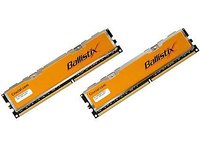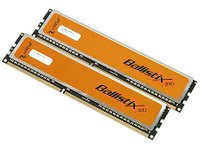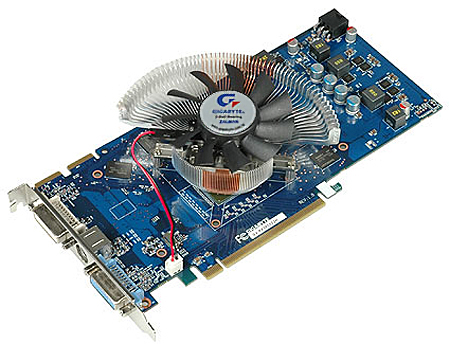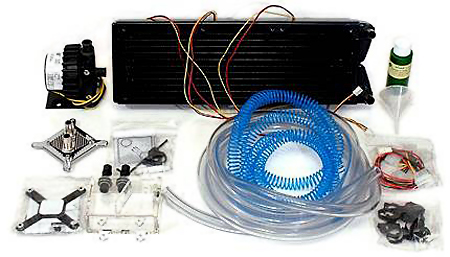11-Way P45 Motherboard Shootout
Test Hardware
| Socket 775 Processor | Intel Core 2 Duo E6850 |
| (Conroe 65 nm, 3.00 GHz, 4 MB L2 Cache) | |
| DDR3 System Memory | Crucial Ballistix BL12864BA1608.8SFB DDR3-1600 |
| 2x 1024 MB at DDR3-1066, CL 5.0-5-5-15 | |
| DDR2 System Memory | Crucial Ballistix BL12864AA804.16FD3 DDR2-800 |
| 2x 1024 MB at DDR2-1066, CL 5.0-5-5-15 | |
| Hard Drive | Western Digital WD1500ADFD-00NLR1, Firmware : 20.07P20 |
| 150 GB, 10,000 RPM, 16 MB cache, SATA/150 | |
| Graphics Card | Gigabyte GV-RX385512H (Radeon HD 3850) |
| 670MHz GPU, 512MB GDDR3-1660 | |
| Sound Card | Asus Xonar D2X (PCI-Express) |
| Power Supply | Coolermaster RS850-EMBA (850W, ATX12V v2.2) |
| System Software & Drivers | |
| OS | Windows Vista Ultimate 6.0.6000 (Vista Retail) |
| DirectX Version | DirectX 10.0 |
| Platform Drivers | Intel INF 9.0.0.1008 |
| Graphics Driver | ATI Catalyst 8.4 |
We’ve been using Gigabyte’s Radeon HD 3850 for a while, and while it is getting a little old it continues to allow readers to look back at former articles and compare performance levels. Intel’s upcoming socket change will give us a better opportunity to make major changes to our reference configuration.
Crucial’s Ballistix DDR2-800 predates our reference system, yet its ability to run at DDR2-1066 CAS 5.0-5-5-15 allows us to compare DDR2 to DDR3 platforms at the same data rate and timings.


Making for a fair comparison, DDR3 platforms use Ballstix DDR3-1600 CAS 8, slowed to 1066 MHz data rate with tighter CAS 5.0-5-5-15 timings.
Overclock testing is an important part of today’s article, so we used Swiftech’s Apogee GTX water block, MCP-655b high-flow pump and 120 mm x3 fan radiator to keep temperatures near ambient conditions. This Swiftech kit has worked so well for us that it’s been used in five consecutive LGA775 motherboard shootouts.
Get Tom's Hardware's best news and in-depth reviews, straight to your inbox.
Current page: Test Hardware
Prev Page P45D3 Platinum Software And Accessories Next Page Benchmark Configuration-
nickchalk Where are the lower price P45 M/B ?Reply
Asus P5Q pro is out for €110 and P5Q deluxe for €165 the price difference is about 70$ in Greece. -
Proximon I suppose I can get some good from having read this. Did you get paid by the word? Maybe next time you could just put together a complete features chart so that we can have some convenient comparison? You know, so someone could go to a chart and see at a glance which boards had eSATA or firewire, or 8 USB.Reply
-
JPForums I'd rather have the overabundance of information than a lack of information. Presentation could use a little refining (I.E. comparison charts and the likes), but having the relevant information available at least is a good thing.Reply -
the introduction and specifics are nice, the comparision isn't. so, why don't you test with an 8500 or qx9650? 6850 are outdated... and a mobo handling a c2d doesn't mean it can handle a quad too, see P5K for example (it stinks when it comes to a q6600).Reply
-
Crashman procithe introduction and specifics are nice, the comparision isn't. so, why don't you test with an 8500 or qx9650? 6850 are outdated... and a mobo handling a c2d doesn't mean it can handle a quad too, see P5K for example (it stinks when it comes to a q6600).Reply
Tom's Hardware wants the performance of current articles to reflect that of recent articles, so a "standard test platform" was chosen a while ago. It will get updated, but probably not before the new socket becomes widely available. -
zenmaster I would have liked to see something such as a P35 and an X48 as controls to help analyze the P45 Performance.Reply
In otherwords, What is the P45 Gaining me over the older P35.
What would I gain by going to the X48. (Or Lose) -
Crashman zenmasterI would have liked to see something such as a P35 and an X48 as controls to help analyze the P45 Performance.In otherwords, What is the P45 Gaining me over the older P35.What would I gain by going to the X48. (Or Lose)http://www.tomshardware.com/reviews/intel-p45-chipset,1961.htmlReply -
johnbilicki The first 17 pages were filled with nothing but junk from ASUS. Do us a favor: don't even bother featuring or *MENTIONING* anything for any reason from a company that refuses to RMA 200-400 dollar brand new motherboards with anything other then used and usually broken junk. It destroyed my enthusiasm for the article.Reply -
dobby nickchalkWhere are the lower price P45 M/B ?Asus P5Q pro is out for €110 and P5Q deluxe for €165 the price difference is about 70$ in Greece.Reply
the p5q PRo is a p43 board, i should know i have one


